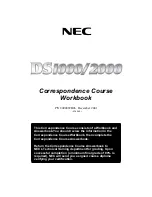
Bosch Security Systems | 2011-02
Praesideo 3.5
| Installation and User Instructions | 9 | System Configuration
en
| 399
Volume override output
key can be assigned to a zone (see
section 45.2) and becomes active when a call with a
priority equal to or higher than 32 is sent to the zone.
See figure 47.37 for an overview of the
Action
programming
page for a
Volume override output
key.
47.3.31 System fault
The
System fault
action is intended for control outputs
and call station keypads or call station keypad kits. The
key/input itself is not used by this action; only the
second output or yellow indicator attached to the key is
activated while a system fault is present. System faults
are:
•
Configuration file error
•
Flash card data error
•
Flash card missing
•
No valid configuration file found
•
Processor reset
47.3.32 Zone status
The
Zone status
action is intended for LBB4434/00 Call
Station Keypad Kits. The key/input itself is not used by
this action; only the indicators/outputs attached to the
key is activated. The
Zone status
action activates the
indicators/outputs belonging to the key if certain
conditions are met. It serves two purposes:
1 If a call is made to at least one of the configured
zones or zone groups with a priority higher than or
equal to the configured priority, then the second
output for this key indicator (normally a yellow LED)
is activated on an LBB4434/00 keypad kit. If it is
used to indicate an emergency call in these zones or
zone groups, then a red LED should be connected to
this output. Preferably a dedicated indicator per
emergency zone is used. The color red for this
purpose is defined in most emergency sound system
standards, e.g. EN54-16. If the defined priority is set
to 224 the
Zone status
indicator lights if an emergency
call (priority equal to or higher than 224) is made to
that zone or zone group. See figure 47.31 for an
overview of the
Action programming
page for a
Zone
status
key.
2 If a fault is present in the zone that is configured for
this action, then the first output for this key indicator
(normally a green LED) is activated on an
LBB4434/00 keypad kit (flashing). This indicates that
one or more fault events are present for units or
connections that are associated with that zone. A
yellow LED should be connected to this output. This
color is defined in most emergency sound system
standards, e.g. EN54-16. A zone fault is a fault that
causes that (part of) a zone cannot be reached for
calls anymore. This indication is the collection of
16 different faults that may cause a problem to reach
a zone completely, like line faults, overheat and
overload faults. If a fault is internally solved by e.g. a
spare amplifier that takes over a defect amplifier, this
will not result in a zone related fault but only in a
more specific fault about the reason for the spare
amplifier switching. Also in case of redundant
loudspeaker line configuration, a single GroupAFault
or GroupBFault will not contribute to the zone fault
status, since the zone is still addressable with a level
of -3 dB. This assumes that the loudspeakers in that
zone are evenly divided between group A and group
B. The zone fault status is de-activated when all faults
that contribute to that zone fault status have been
resolved, even if they are not yet reset.
The following faults contribute to the
Zone fault
status
(see section 54, the
Fault events list
for details):
•
Amplifier failure
•
Amplifier failure or overload (for LBB4428/00
only)
•
Amplifier initialization failure
•
Amplifier loudspeaker line failure (for single
loudspeaker line supervision)
•
Amplifier loudspeaker line failure (for multiple
loudspeaker line supervision)
•
Amplifier missing
•
Amplifier overheat: muted
•
Amplifier overload
•
Amplifier short circuit
figure 47.37: Volume override output key
















































